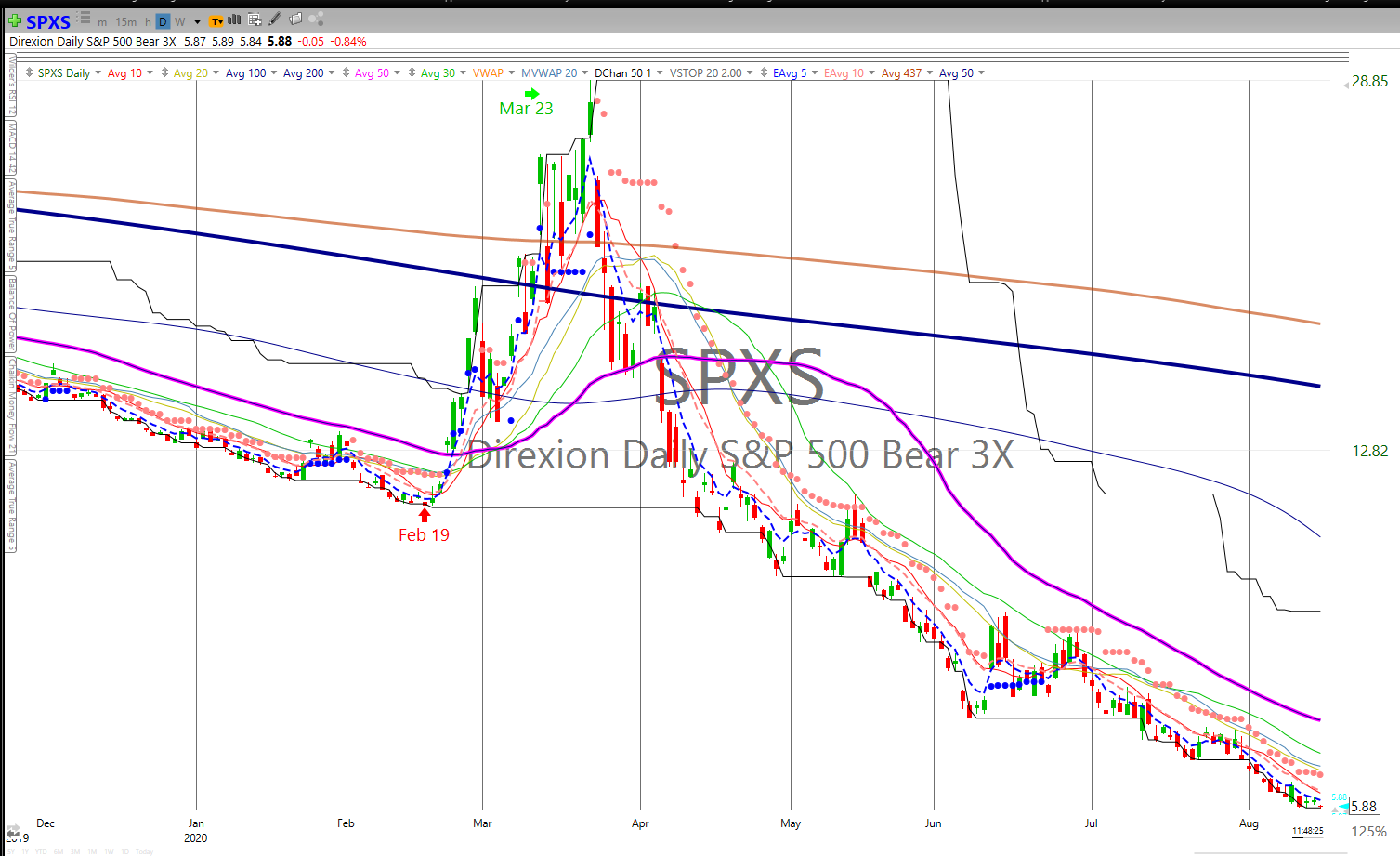Zombies
They’ll eat you alive!
Failure to Rebalance – Zombie Sign #1
When was the last time you rebalanced your 401(k) or other retirement account? When you set it up, you took a fairly conservative approach and bought 60% stock mutual funds and 40% bond mutual funds. Over time, the values of those funds have changed, perhaps significantly. Right now, your stock funds might comprise 85% of your account. Great. Excellent gain. But . . . . you are now subjecting yourself to greater risk. You need to rebalance. Now. And at least every six months.
If you’re sitting on an out-of-balance retirement account—or several different retirement accounts—then you are sitting on a Zombie Account. That’s right. That’s what investment advisors call it: an account left for dead, an account that might just rise up (at night, of course) and devour your net worth.
Not a pretty sight, these Zombie accounts . . . .

iStock by Getty Images
Failure to Increase Contributions to Retirement Accounts – Zombie Sign #2
When was the last time you increased your contributions to your retirement account? You’re making more money now. Shouldn’t you be saving more? Yet many people set up retirement accounts in their youth and establish relatively small automatic contributions. But as your income increases, so should your retirement allocations. Under current federal tax law, you can contribute $19,500 to your 401(k) or similar workplace plan; that’s up from $19,000 in 2019. If you’re 50 or older, the catch-up contribution limit is $6,500, up from $6,000 in 2019. “If your employer allows after-tax contributions or you’re self-employed, you can save even more. The overall defined contribution plan limit moves up to $57,000 [in 2020], from $56,000 [in 2019].”[i]
Ask any rich person, “What’s your secret?” One answer they always give: “Save as much as you can. Compounding investment amounts in tax-free accounts can result in large returns when you reach your 60s.”
So any retirement account you have sitting around growing with contributions you made when you were young . . . . Well, that’s a Zombie Account.
Failure to Move Old Retirement Accounts – Zombie Sign #3
Oops, what about that account you set up when you worked for Acme Widgets? Great job, that was. But your current position pays a boatload more. Did you have a retirement account at Acme? The stats should make any working American sit up and take notice. Get this:
A 2013 survey by ING Direct USA showed half of American adults who participated in an employer-sponsored retirement plan, such as a 401(k), have left an account at a previous employer. These “orphaned” accounts represented more than $1 trillion in investment dollars in 2010.[ii] (emphasis added)
You need to launch a search for any Zombie accounts sitting around with previous employers. You can call the Human Resource people at those companies for assistance. You might also get in touch with the Pension Benefit Guaranty Corporation. Or you can check the National Registry of Unclaimed Retirement Benefits at unclaimedretirementbenefits.com. According to the website, “The National Registry is a nationwide, secure database listing of retirement plan account balances that have been left unclaimed by former participants of retirement plans.”
Once you locate these Zombie accounts, you need to roll them over into your current 401(k) or IRA. You should check with an investment advisor or your CPA to make sure you’re performing a tax-free rollover and not a taxable distribution.
Act Now
Anyone with Zombie accounts needs to take the steps we’ve outlined above.
Beating the Zombies
There is a better way. No Zombies can arise in the dark of night from funds we manage at Research Financial Advisors. Check us out here: rfsadvisors.com. When you establish an account with us, we ascertain your comfort level of risk. If you’re relatively young, you should probably use our Aggressive Growth Model where we automatically invest your funds in a variety of ETFs we think show the best chance of growth. Right now, as of August 14, 2020, our Aggressive portfolios are up 23.02% year-to-date, net-of-fees. Yes, you read that right. We’re up 23.02%.
Our more conservative portfolio, consisting of 100% bonds, is designed for those who want to reduce risk and increase income. But the market value of our Bond Model is up 1.62% year-to-date, net-of-fees. And that doesn’t count the income the Bond Model has produced.
Many of our clients choose a mix between the Aggressive Model and the Bond Model. The returns on those accounts are less than the Aggressive results but more than the Bond.
Worried about current market volatility? Afraid of another crash just around the corner? Not a problem here at RFS. We know how to play defense. Consider the recent crash. The all-time high of the S&P 500 Index was February 19th. By March 23, the S&P declined 33.92%. Just 8 days after the S&P all-time high, on February 27, 2020, just before the close at 3:56 p.m., we purchased SPXS for all our accounts (larger amounts in the aggressive funds, smaller amounts in the conservative ones). The SPXS ETF produces three times the inverse of drops in the S&P Index. If the S&P goes down 10%, this ETF goes up 30%.
Our purchase price for SPXS: $16.1189 per ETF.
It’s a risky ETF, and we watch it carefully. After all, when the S&P goes up 10%, this ETF drops 30%. But it performed beautifully in March of this year, and shielded our accounts from gut-wrenching market drops. At 1:06 p.m., on March 23, 2020, the exact date of the S&P 33.92% decline, we sold the SPXS positions, banking a significant profit.
Our selling price for SPXS: $26.28 per ETF.
Today, the SPXS is trading at $5.86 or so. The following chart of SPXS shows how we entered our positions at $16.1189 as the rise started to accelerate Notice that we exited our position on March 23 at $26.28, right near the very top of the spike in price.

Each day, we study charts like the one above. We stay alert, ready for the next market rise or the next market plunge. Will the market go down again? Yes. Absolutely. How much? No one knows. When? No one knows. But we’re ready. We’re nimble. We’ll act and play defense when our indicators tell us a drop is about to morph into a plunge.
So say good-bye to Zombies. At RFS, you’ll never experience a failure to rebalance (Zombie Sign #1), for we constantly review your account and make certain it continues to hold those ETFs best suited to your level of risk. Further, we’ll encourage you to increase your contributions to your account as your salary and other remuneration grow (Zombie Sign #2), making sure you comply with all applicable IRS regulations. And we sure as heck won’t let you forget us (Zombie Sign #3), because we stay in touch with you weekly . . . sometimes daily.
In fact, if you need to get in touch with us quickly, we give out our cell phone numbers: There’s no elevator music on our phone system.
Give Us a Call
So look around your financial world and see if some of your accounts qualify as Zombies. Look for the three signs: accounts not rebalanced, retirement accounts receiving low and out-of-date contributions, and accounts sitting at former employers. Or look at your nonretirement accounts. Do any of them qualify as Zombies?
You may call my cell number right now: (240) 401-2355. We can talk about your situation and look at your various accounts.
After all, doing it yourself can sometimes result in doing yourself in.
Best regards,
Jack Reutemann
[1] https://www.forbes.com/sites/ashleaebeling/2019/11/06/irs-announces-higher-2020-retirement-plan-contribution-limits-for-401ks-and-more/#7ecdb4e333bb
[1] https://finance.yahoo.com/news/zombie-401-k-131547647.html